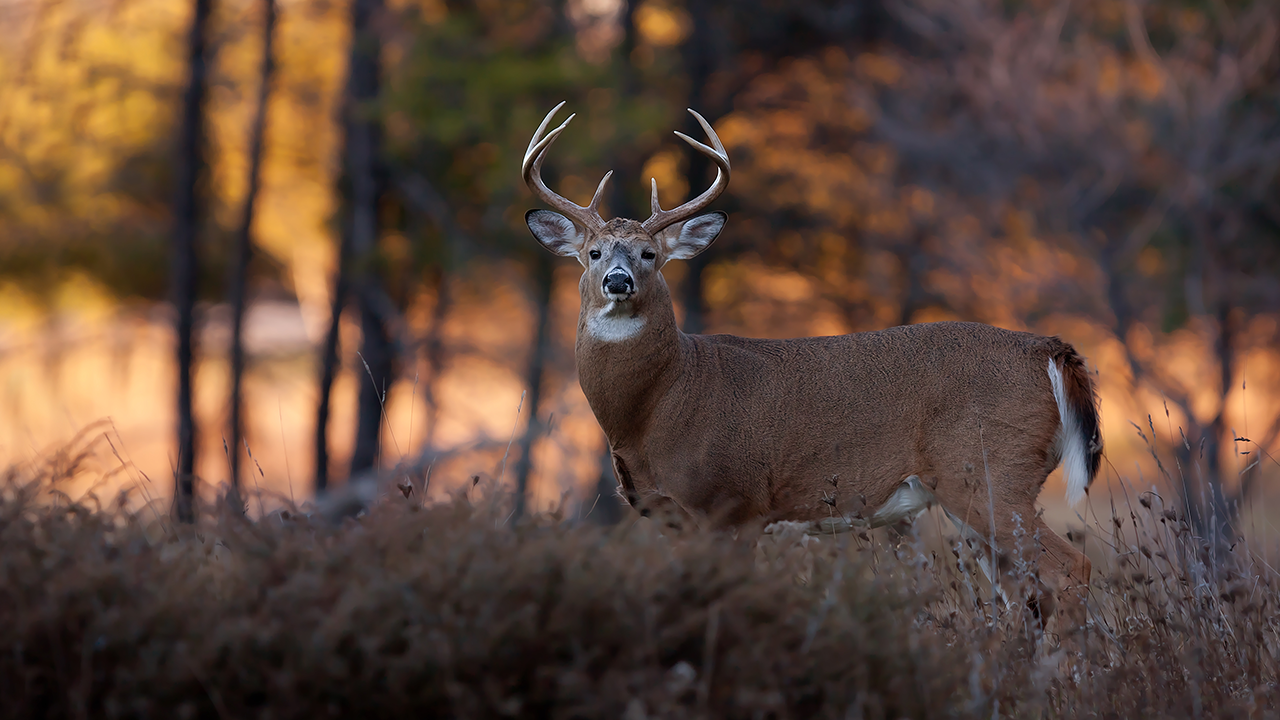September 13, 2021
Contact: Brian Consiglio, 573-882-9144, consigliob@missouri.edu
Researchers at the University of Missouri have found chronic wasting disease – a fatal illness found in deer that affects their neurological system and causes chronic weight loss – has spread fivefold among Kansas counties, raising concerns about the spread of the disease and the importance of educating hunters about it.
“In 2009, there were only six Kansas counties with confirmed positive cases of chronic wasting disease, and by 2020, there were 32 Kansas counties with confirmed positive cases,” said Zoe Koestel, a doctoral student at MU. “There has definitely been an increase in the prevalence of this disease, so our surveillance research will help better track the spread of the disease and possibly identify clusters or patterns, which can inform management efforts.”
Koestel works with Ram Raghavan, a professor in the MU College of Veterinary Medicine and School of Health Professions, and the Kansas Department of Wildlife and Parks, to test samples of hunted deer at MU’s Veterinary Medical Diagnostic Laboratory. After analyzing more than 1,900 samples from last year’s deer hunting season, they identified chronic wasting disease in seven eastern Kansas counties where the disease was previously undetected.
The project involves collaborating with taxidermists, wildlife biologists, game wardens and individual hunters, who collect and send the lymph nodes of their hunted deer to the MU College of Veterinary Medicine, where the samples are tested for chronic wasting disease.
“If a test comes back positive, I will call the hunter to let them know the CDC advises against eating the meat of diseased animals,” Koestel said.
Chronic wasting disease has been spreading throughout the United States for decades, despite efforts to contain it. Since it was first discovered in Colorado in 1967, the disease has now been identified in deer in 26 states, and the Midwest has seen a particularly sharp increase of its prevalence recently.
Currently, there are no reports of humans becoming infected with chronic wasting disease by eating the meat of a deer with the disease. However, similar to bovine spongiform encephalopathy, or mad cow disease, chronic wasting disease is caused by misfolded proteins called prions, which cannot be eliminated by traditional means such as cooking or heating.
There is evidence that mad cow disease can be transmitted to humans by ingestion of diseased beef. According to the CDC, four deaths from variant Creutzfeldt-Jakob disease, a human prion disease, have been identified in the United States, which has helped raise awareness regarding the consumption of meat from diseased animals.
“This project not only helps us track the spread of the disease, it also helps raise awareness for hunters because we want them and their families to stay as safe as possible,” Koestel said. “Hunters are the world’s original conservationists, and they often ask how they can help our efforts. The more samples we receive from hunters, the better we can track the spread of chronic wasting disease.”
The testing results may provide key insights on not just where the disease is currently located, but where it might be detected in the future.
“At the ‘One Health’ laboratory in MU’s Department of Veterinary Pathobiology, we investigate how wildlife and other diseases change trends in geographical areas over time, so these results provide helpful information to public health officials so more tailored management efforts may be considered,” Koestel said.

Ram Raghavan is a professor in the MU College of Veterinary Medicine and MU School of Health Professions.
As hunting license purchases and excise taxes on firearms, ammunition and archery equipment, collected through the Pittman-Robertson Wildlife Restoration Act, make up a large component of funding for state wildlife agencies, Koestel is also interested to see how the increased prevalence of chronic wasting disease, as well as the ability to test harvested animals for the disease, will impact hunter perceptions moving forward.
“Hopefully this research leads to more awareness about the disease so hunters are inclined to have their harvested deer tested for it,” Koestel said.
Programs such as Share the Harvest, which allows hunters to donate surplus venison to low-income families in Missouri, will only accept and package meat that tests negative from the 29 Missouri counties within the state’s Chronic Wasting Disease Management Zone.
“It feels good to contribute to sampling efforts that will add knowledge about this disease so it can be managed among deer and also potentially prevent it from jumping to other species, particularly humans,” Koestel said. “This is a great example of the ‘One Health’ concept, as the health of humans, animals and the environment are all intertwined and affect one another.”
Editor’s note: Funding for the chronic wasting disease surveillance project is provided by the United States Department of the Interior’s Fish and Wildlife Service, and administered by the Kansas Department of Wildlife and Parks. The content does not necessarily represent the official views of the funding agencies.





